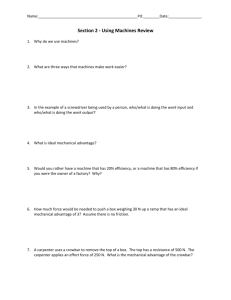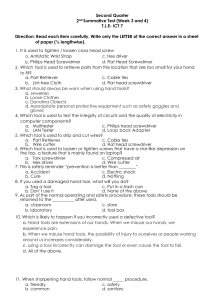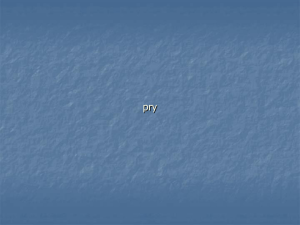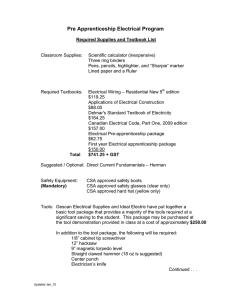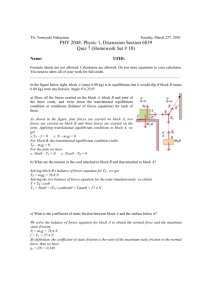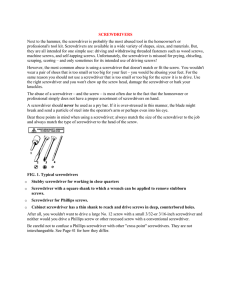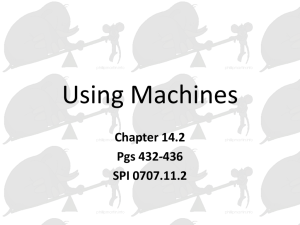Work and Machines: Physics Presentation
advertisement
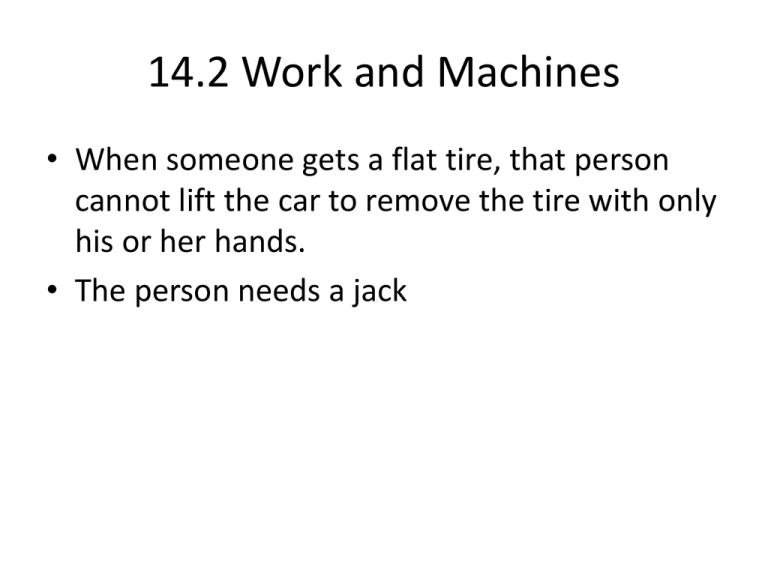
14.2 Work and Machines • When someone gets a flat tire, that person cannot lift the car to remove the tire with only his or her hands. • The person needs a jack Machines Do Work • A machine is a device that changes a force. • How do machines make work easier? • Machines make work easier to do. They change the size of a force needed, the direction of a force, or the distance over which a force acts. Increasing Force • Turning a screwdriver is using a small force (it’s not as difficult as using your fingers) over a large distance (the screwdriver is longer than the screw) to become a large force (to remove the screw) over a short distance (the screw does not fly out). • Picking up books one at a time takes less force but a longer distance. Decreasing distance decreases the amount of force needed. Increasing Distance • Some machines increase the distance over which the force is exerted. • When you row a boat, you should only move the oars a short distance. The long oars have a greater distance in the water and speeds up travel time. However, this takes more force than turning a screwdriver. Changing Direction • Some machines do work by changing the direction of a force. • For example, when you open a can of paint with a metal wedge, you push the wedge down while the other end of the wedge that is between the lid and the can moves up (opposite direction). • Also, when a crew member rows an oar, the short end is pulled to the person, and the long end in the water moves away. Work Input and Work Output • You must remember that friction is still present when doing work. • For example, when you use a can opener to open a can, the wheel you turn heats up a little due to friction • Because of friction, the work done by a machine is always less than the work done on a machine. Sidebar: Perpetual Motion • Scientists have been looking for self-sufficient machines that will do the same work as is put into the machine. • One such machine that scientists are trying to invent is a perpetual motion machine that moves by itself over and over with no human involvement past starting the machine. • Sadly, friction makes this dream impossible (perpetual motion is like expecting a bowling ball to slide along an infinite alley forever). Work Input to a Machine • Input force is the force you exert on a machine (how much you push or pull the machine). • Input distance is the length of the force applied by yourself. • Work input is the work done by the input force over the input distance (work = force x distance). Work Output of a Machine • Output force is the force exerted by the machine. • Output distance is the distance the output force is exerted. • Work output is the output force multiplied by the output distance. • You would need to decrease friction in order to increase the output, and you can never have a greater output than input. Analysis of Output vs. Input • • • • Example: screwdriver Input occurs at the handle of the screwdriver. Output occurs at the bit (pointy end). The input distance is greater (the handle has a larger circumference than the bit). • The output force is greater (unless you have arthritis, it is easy to use a screwdriver). • The bit heats up (especially if electric), so output work is lost due to friction.
